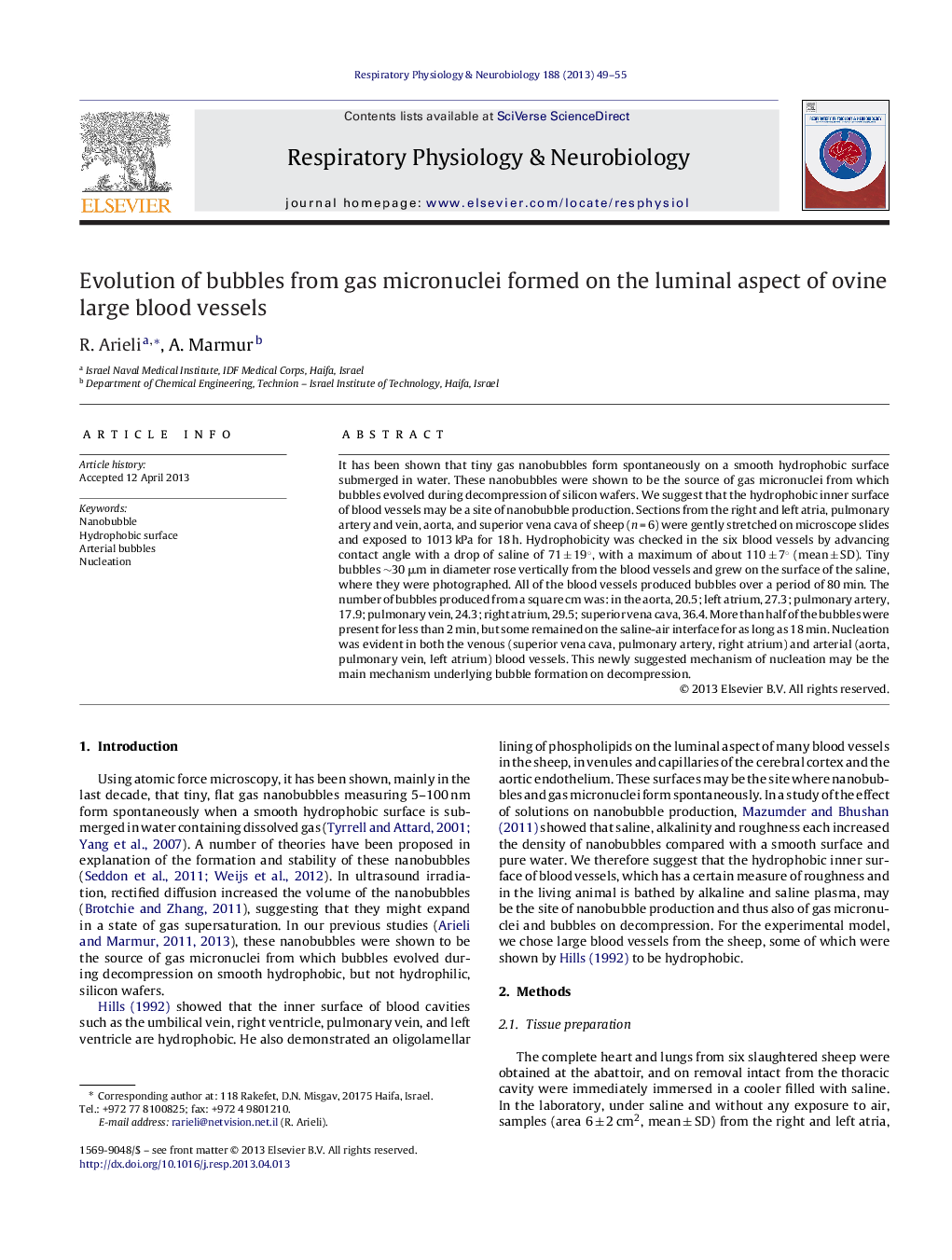| کد مقاله | کد نشریه | سال انتشار | مقاله انگلیسی | نسخه تمام متن |
|---|---|---|---|---|
| 5926199 | 1167348 | 2013 | 7 صفحه PDF | دانلود رایگان |
- Nanobubbles formed on hydrophobic flat surface can be the gas micronuclei that on decompression evolve as bubbles.
- Large arterial and venous blood vessels from sheep were exposed to 1013Â kPa for 18Â h and photographed thereafter.
- Hydrophobicity was shown in all blood vessels.
- All of the blood vessels produced bubbles: 18-36 bubbles/cm2.
- This new mechanism may be the main source of bubble formation on decompression.
It has been shown that tiny gas nanobubbles form spontaneously on a smooth hydrophobic surface submerged in water. These nanobubbles were shown to be the source of gas micronuclei from which bubbles evolved during decompression of silicon wafers. We suggest that the hydrophobic inner surface of blood vessels may be a site of nanobubble production. Sections from the right and left atria, pulmonary artery and vein, aorta, and superior vena cava of sheep (n = 6) were gently stretched on microscope slides and exposed to 1013 kPa for 18 h. Hydrophobicity was checked in the six blood vessels by advancing contact angle with a drop of saline of 71 ± 19°, with a maximum of about 110 ± 7° (mean ± SD). Tiny bubbles â¼30 μm in diameter rose vertically from the blood vessels and grew on the surface of the saline, where they were photographed. All of the blood vessels produced bubbles over a period of 80 min. The number of bubbles produced from a square cm was: in the aorta, 20.5; left atrium, 27.3; pulmonary artery, 17.9; pulmonary vein, 24.3; right atrium, 29.5; superior vena cava, 36.4. More than half of the bubbles were present for less than 2 min, but some remained on the saline-air interface for as long as 18 min. Nucleation was evident in both the venous (superior vena cava, pulmonary artery, right atrium) and arterial (aorta, pulmonary vein, left atrium) blood vessels. This newly suggested mechanism of nucleation may be the main mechanism underlying bubble formation on decompression.
Journal: Respiratory Physiology & Neurobiology - Volume 188, Issue 1, 1 August 2013, Pages 49-55
